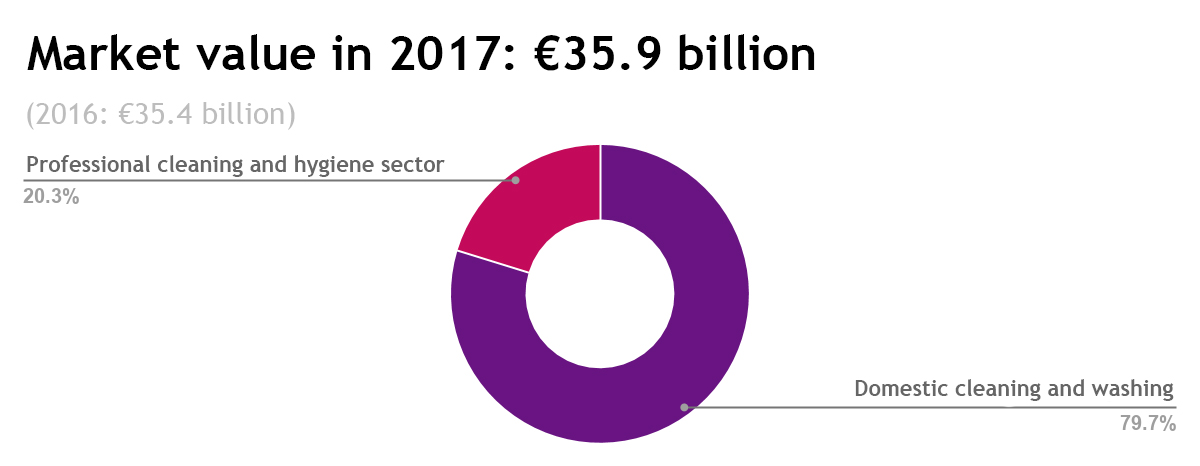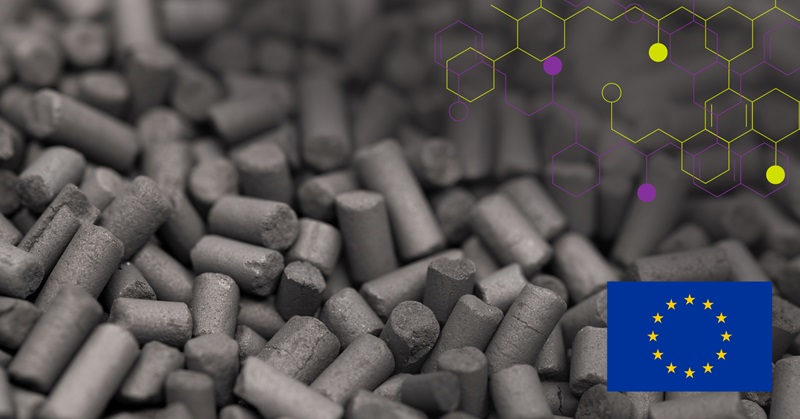Current trends in the detergents and cleaning products industry
The detergents and cleaning products industry plays a significant role in the European economy. The estimated value of the domestic and professional detergents and hygiene sector in 2017 was EUR 35 billion, which represented growth of 1.4 percent compared to the previous year. The industry is expected to grow by a further 1.2 percent a year by 2021.

Consumer sales accounted for EUR 28.6 billion, representing around 80% of total sales. Laundry detergents accounted for almost half of consumer sales (47.3%), surface treatment products for 21.2%, dishwashing detergents for 15.4% and maintenance products for 13.8%. Professional products accounted for EUR 7.3 billion. Among these, healthcare products accounted for 24.1%, the food, drinks and agricultural sector accounted for 19.7%, the kitchen and catering sector for 19.3%, the building maintenance sector for 11% and the professional laundry sector for 8.9%.
Trends in 2018
Three main trends can be identified in the detergents and cleaning products market relating to lifestyle, the products themselves, and the market.
Changing consumer habits, such as growing online sales, have changed also consumer expectations. A healthy lifestyle is more the rule than the exception these days, and this can be seen also in more attention to hygiene at home. Consumers consider a clean home and clean clothes to be just about as important as good health. As gender roles are further blurred, men are increasingly involved in cleaning and looking after their homes. At the same time, the desire for comfort has increased, and competition between easy-to-use cleaning products has intensified. Growing environmental awareness has also increased the popularity of cold washing, requiring more effective low-temperature performance from detergents.
Fresh scents have overtaken whiteness, and concentrates are gradually overtaking powders in terms of both laundry and dishwashing detergents. Concentrating on the whole is the prevailing trend in terms of product packaging, raw materials and retail sales. This trend is being led by environmental concerns and the search for more sustainable solutions. Greater attention is paid to the environmental friendliness of detergents and cleaning products in Southern Europe than in the Nordic region. Environmental friendliness for consumers mainly refers to recycled and recyclable packaging, as well as low-temperature products and products that do not harm the environment.
In terms of global market trends, sales of detergents and hygiene products are growing faster in Latin America than in North America and Europe, where the markets are already saturated and there is little room for further growth. Private label products are also becoming increasingly popular in the developing markets thanks to consolidation in the retail sector.
Within Europe, growing the market is almost impossible. In order to remain competitive, therefore, companies must be able to demonstrate their environmental footprint and to reduce this footprint by enhancing the contents, packaging and transportation of their products. At the same time, products should be easy to use and give excellent results – at least as good as less environmentally friendly alternatives. One way to prove the environmental friendliness of products is with an environmental label.
Sources: Euromonitor, AISE


